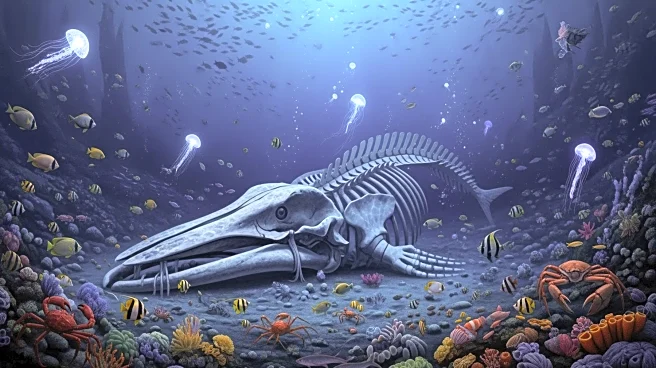What's Happening?
Recent research published in Royal Society Open Science has provided empirical evidence that sharks, an ancient and diverse animal lineage, scale like geometric objects. The study, led by Joel Gayford
from James Cook University, used CT scans and digital tools to analyze the surface areas and volumes of over 50 shark species. The findings indicate that sharks follow a two-thirds scaling law, similar to geometric objects, where surface area increases more slowly than volume. This suggests underlying constraints in evolution that may influence how life forms interact with their environment. The study highlights the potential for similar scaling rules in other animal groups, reflecting fundamental principles of heat exchange, metabolism, and development.
Why It's Important?
Understanding the scaling patterns of sharks provides insights into the evolutionary constraints that shape the diversity and adaptation of life forms. This research contributes to the broader field of zoology by offering a framework for studying biological scaling across different species. The findings may have implications for understanding metabolic processes, energy efficiency, and ecological interactions in marine environments. By revealing fundamental rules that govern the growth and form of animals, this study enhances the scientific understanding of evolutionary biology and the factors that drive biodiversity.
Beyond the Headlines
The study of scaling patterns in sharks opens new avenues for research into the evolutionary mechanisms that constrain animal forms. It challenges scientists to explore the implications of these patterns for ecological and physiological processes, potentially leading to discoveries about the adaptability and resilience of marine species. Additionally, the research highlights the importance of technological advancements in studying large animals, offering opportunities to refine methodologies and improve data accuracy in future studies.











